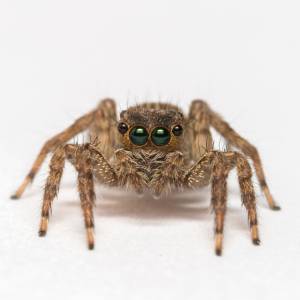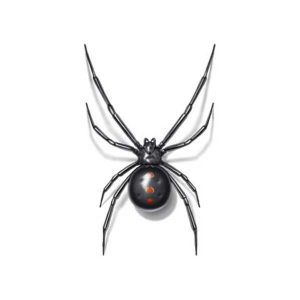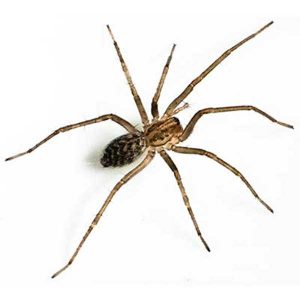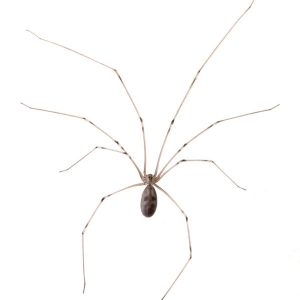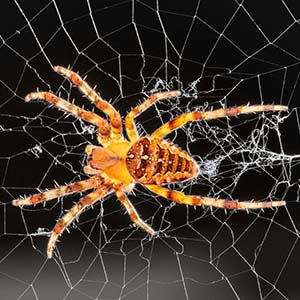Description
Jumping Spiders in Spokane, WA and Coeur d'Alene, ID
Jumping spiders are a very common pest in the United States, particularly here in the Pacific Northwest. Though these spiders are very small, they move extremely quickly and can even jump up to 50 times their body length. Unlike most other spiders, these unique arachnids have excellent eyesight that allows them to stalk and hunt prey in daylight. Because of this ability, these spiders generally do not rely on webs to catch prey, and will instead use their strong legs to pounce. Jumping spiders can usually be distinguished by their tiny size, iridescent fuzz, and front-facing eyes. They are frequently found outdoors in forested areas or gardens with plenty of small cracks and crevices to hide in. Though they generally prefer to remain outdoors, they may be carried indoors on clothing or plants.
Jumping Spider Habitat
Jumping spiders are very small, so they are often drawn to areas with lots of tiny crevices that they can hide in. When outdoors, they are usually found beneath stones, in bushes or other vegetation, or in the grooves of tree bark. While jumping spiders generally do not intentionally head indoors, they may be accidentally carried inside, especially in potted plants. If a jumping spider is indoors, they usually look for cracks and crevices that they can hide in, such as furniture or floorboards. Once a jumping spider finds a suitable location, it will spin a thick and funnel-shaped web to use as a “retreat”. Since these spiders generally abandon their web the same day it is created, an infestation can result in a lot of webbing throughout a house.
Jumping Spider Behaviors, Threats, or Dangers
Jumping spiders are very skittish, and they are not aggressive toward humans. That said, they may bite if they feel threatened, though their bites are not poisonous. These arachnids are mainly considered pests because of the large amounts of webbing that they can leave throughout a home. Since jumping spiders only use their webs as a temporary retreat in between hunting prey, they can leave behind multiple webs per day. While not particularly dangerous, they can be an eyesore and a nuisance to home and property owners. Since these spiders can move so quickly and don’t revolve around a nest, they can also be very tricky to get rid of. If you are dealing with an infestation, it may be best to call a professional spider exterminator to quickly remove these pests.
Need help with Jumping Spider control?
We'll call you! Leave your information below.

